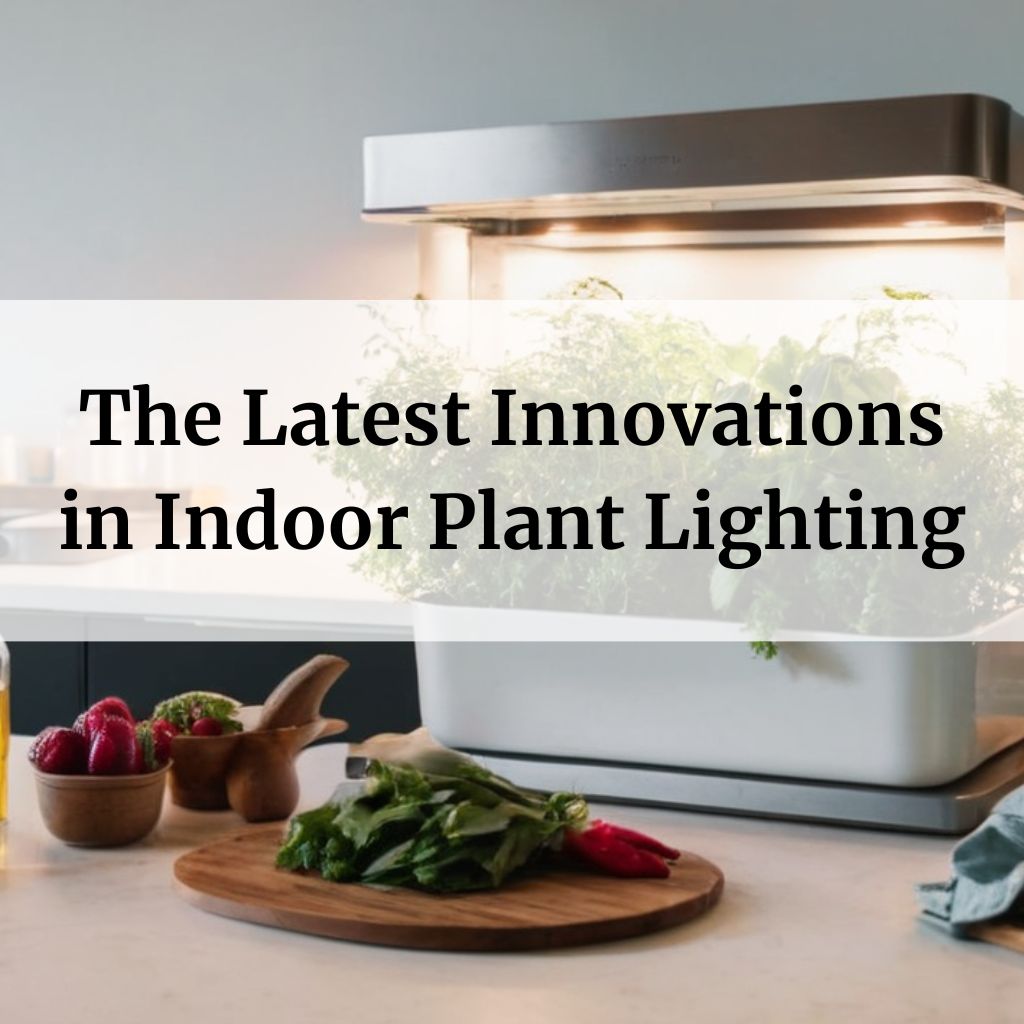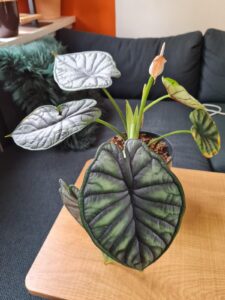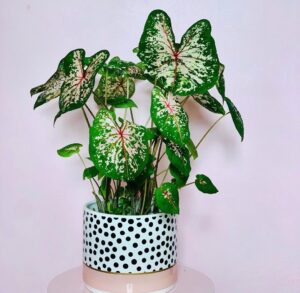
The latest innovations in indoor plant lighting have brought about significant advancements in technology, providing more efficient and effective lighting solutions for indoor cultivation. These innovations aim to mimic natural sunlight and provide optimal light conditions for plant growth.
In this article
LED Grow Lights
LED (Light Emitting Diode) grow lights have become increasingly popular in indoor gardening due to their energy efficiency and versatility.
LED lights can be customized to emit specific wavelengths of light, allowing growers to tailor the light spectrum to the specific needs of different plants at different growth stages.
Here you can use LED grow lights in indoor gardening:
- LED grow lights are designed to provide the specific light spectrum required for healthy plant growth, including the colors of light needed for photosynthesis.
- They are energy efficient, easy to install, and have a longer lifetime compared to other lighting sources.
- LED grow lights also produce less heat, reducing the risk of plant damage and allowing for closer proximity to the plants.
- LED grow lights emit light in the photosynthesis range, known as Photosynthetically Active Radiation (PAR), which is essential for driving plant growth.
- There are different types of LED grow lights, including toplights, inter-lights, tubular LEDs (TLEDs), and flowering lamps, each serving specific needs of plants and growers.
- LED grow lights can be customized to emit specific wavelengths of light, which is beneficial for different stages of plant growth and for different types of plants.
- They are designed to withstand high humidity in grow rooms and can operate in damp conditions.
- LED grow lights are suitable for small to large gardens, as they can cover a big area with even, bright illumination.

GooingTop LED Grow Light
- This growing Lamp is similar to the full-spectrum sunlight at noon
- The light is soft and flicker-free, which is very suitable for reading lamp
Plasma Lights
Plasma grow lights are gaining attention for their ability to provide a broad spectrum of light, closely resembling natural sunlight. They are known for their high light output and efficiency, making them a viable alternative for indoor farming.
Plasma lights are an interesting option for indoor gardening:
- Plasma grow lights are a new type of grow light technology that uses electromagnetic induction to emit light without using filaments or electrodes.
- They are designed to produce a more natural light that duplicates the full light spectrum of the sun, which is beneficial for plant growth.
- Plasma grow lights are energy efficient and use about 50% as much energy as HID lamps, which are commonly used in indoor gardens.
- They have a longer lifespan compared to other lighting sources, which can save growers money in the long run.
- Plasma grow lights are capable of producing a wider spectrum of light than other types of grow lights, including fluorescent lamps and LED grow lights.
- They are suitable for growing many different types of plants, including those that require high light intensity and those that require a more balanced light spectrum.
- Plasma grow lights are still a relatively new technology, and many growers are still experimenting with them and supplementing them with other types of grow lights.

Alphalite Plasma Grow Light
- The Alphalite Nite Grower weighs about 10 lbs, which is relatively light compared to other plasma lamps
- For an output of 235 watts, this thing gets relatively hot
- Given its already shaky design, you’ll have to find a way to provide additional cooling to the unit or else it’ll degrade pretty quickly.
Smart Plant Lights
Smart plant lights have emerged as a convenient and efficient solution for indoor cultivation. These lights can be controlled and programmed through mobile apps, allowing growers to set specific schedules and adjust brightness levels according to the needs of their plants.
Some smart plant lights even offer synchronized control for multiple bulbs, providing a seamless lighting experience.
Smart plant lights are revolutionizing the world of indoor gardening:
- Smart plant lights are a part of the rise of smart home technology, allowing for the automation and remote monitoring of indoor gardens using apps and other digital tools.
- Some smart plant lights have built-in sensors that can detect temperature, humidity, and other environmental factors, and adjust the light output accordingly.
- Others can be controlled via smartphone apps, allowing users to adjust the light spectrum, intensity, and duration from anywhere in the world.
- Smart plant lights can help create an optimal growing environment for indoor plants, and their automation features give growers a high level of control over their gardens.
- They are often used for growing a variety of plants, including herbs, microgreens, and other indoor garden favorites.

Diivoo Smart Grow Light for Indoor Plants
- Innovative suzuran flower design creates a cozy and happy home atmosphere
- Bluetooth app control
- Growth mode optimizes the red, blue, and green light quality ratio at 350-780 nm. accelerates photosynthesis and nutrient synthesis
Secondary Optical Lens Design
Some indoor plant lights now feature a secondary optical lens design, which enhances light utilization and increases the light intensity reaching the plants. This design ensures that plants receive ample light intensity for optimal growth, even at the same irradiation height as other plant light bulbs.
A secondary optical lens design can improve light distribution, efficiency, and plant growth in indoor gardening:
- The secondary optical design, through the lens for secondary light distribution, improves light utilization and gives plants more supplementary light.
- This design can improve the light distribution and efficiency of the grow lights, leading to better plant growth and higher light utilization.
- The secondary lens is not part of the LED package but is mounted over the LEDs to narrow the beam of light and improve the system efficiency.
- LED grow lights with a secondary optical lens design are available in various wattages and full spectrum options, suitable for different stages of plant growth.
- Some smart plant lights also allow for the automation and remote monitoring of indoor gardens using apps and other digital tools.
Ceramic Heat Dissipation Technology
To provide plants with light intensity closer to natural sunlight, many indoor plant lights now incorporate ceramic heat dissipation technology. This technology allows for greater power density, ensuring that the lights emit the necessary amount of light without overheating the plants.
Ceramic Heat Dissipation Technology can improve heat dissipation and extend the life of the grow lights, making them a valuable tool for indoor gardening:
- SANSI LED Plant Grow Lights employ Ceramic Heat Dissipation Technology, where LED chips are directly bonded to ceramic, allowing for efficient heat dissipation.
- This technology helps extend the life of the grow light up to 25,000 hours.
- Ceramic Heat Dissipation Technology is a key feature of SANSI’s Patented Chips on Ceramic (COC) Technology.
- The hollow structure of the COC Technology further enhances heat dissipation.
- LED grow lights with Ceramic Heat Dissipation Technology provide a more efficient and long-lasting lighting solution for indoor gardening.

SANSI Smart Grow Light Bulb with APP Control
- Dimmable, Schedule & Timer
- LED Full Spectrum Grow Lights for Indoor Plants
These innovations in indoor plant lighting have revolutionized the way plants are grown indoors, providing more efficient and customizable lighting solutions for optimal plant growth.
Citations







